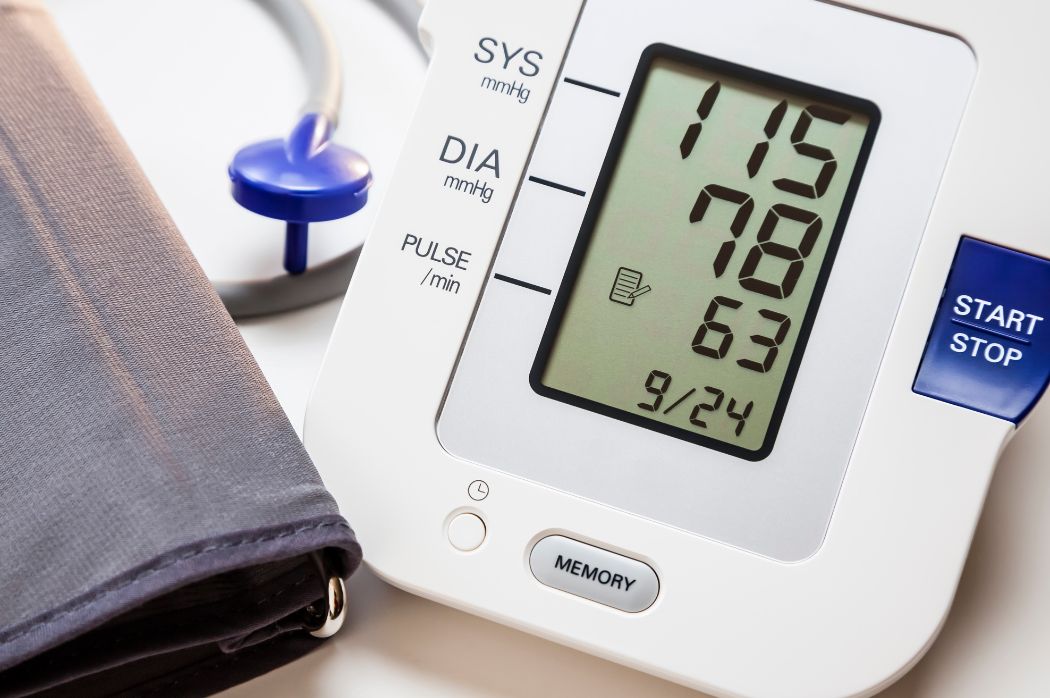Julia Fountain ND NCMP
Cardiovascular disease prevention comes down to keeping the body’s plumbing clear and the blood moving. When there’s a buildup of fats, cholesterol and other substances on the artery walls, this leads to arteriosclerosis or “hardening of the arteries”. This plaque causes arteries to narrow, blocking blood flow. The plaque can burst, leading to a blood clot anywhere in the body. If it’s in the brain it’s a stroke. If it’s in the heart it’s a heart attack. If it’s a clot in the legs it’s peripheral artery disease.
Add high blood pressure to this narrowing of the pipes and it’s hard work on the heart, and wear and tear on the lining of the blood vessels.
In fact, hypertension is the leading modifiable risk factor associated with cardiovascular disease. It’s more of a risk factor than smoking or obesity.
Hypertension is defined as a blood pressure over 140/90. However first line therapies such as dietary, lifestyle and exercise are recommended when systolic blood pressure starts hovering in 130’s.
Things you’ll want to know about hypertension:
1)You can check your blood pressure at home with a home monitor and cuff. Visit hypertension.ca for a list of reliable and recommended machines, as well as instructions for self-monitoring. It’s usually recommended to check 1x/week, with up to 6 measurements taken at the same sitting.
2)White coat syndrome is not benign. Your blood pressure may elevate in the doctor’s office when it’s taken, and be OK at home, but realize that ‘white coat syndrome’ is a form of high blood pressure. A 2019 study in the British Medical Journal reviewed 27 observational studies, looking at over 25 000 adults found those with white coat syndrome had double the risk of death from heart disease, compared to those with normal blood pressure. If you have ‘white coat syndrome’, it tells us your cardiovascular system is working hard under stress. It’s time to start first line therapies such as weight loss, sodium reduction, exercise, smoking cessation, reducing alcohol, stress management and weekly home blood pressure monitoring. Yes, easier said than done and this is where naturopathic care can intervene to provide individualized education, care and implementation.
3) About 60% of people with hypertension will respond to a low sodium diet. You won’t know if you’re a responder unless you try. A low sodium diet implies 1500 mg sodium/day. There are obvious sources of sodium such as chips, crackers, deli meats, canned soups, restaurant foods. And there are sneakier sources such as cheese, cottage cheese, canned beans and tomato products. And yes, sea salt and iodized table salt have exactly the same amount of sodium. Sea salt is NOT a lower sodium salt. It’s always a good idea to check the sodium content on the Nutrition Facts label. Implementation of a dietary strategy that’s low sodium and high potassium can be an evidence-based and effective intervention in curbing age-related increases in blood pressure.
4) The risk of hypertension for women steeply increases after menopause. Estrogen and progesterone receptors are present in walls of blood vessels, including coronary arteries. As blood vessels lose elasticity and flexibility there’s an estimated 4-5 point increase in systolic blood pressure around menopause for many women. It’s estimated that women aged older than 55 years have a 90% lifetime risk of developing hypertension. Mid-life weight gain can also contribute. Each 1 kg of weight gain in perimenopause is associated with 5% increased risk of hypertension. In our perimenopause group program we delve into the risk factors associated with menopause and how to adjust our diet, lifestyle, exercise routines to account for them. When we understand what’s happening and what our options are, we can make better decisions.
Hypertension is called the ‘silent killer’ because the damage it does is invisible and virtually unnoticeable until it’s in later stages. It’s recommended that blood pressure be monitored at least annually for all adults over 40, and more frequently in those with risk factors (smoking, poor diet, weight gain, sedentary lifestyle, family history, postmenopause, white coat syndrome, or previously borderline).
Hypertension is a leading risk factor associated with cardiovascular disease and it’s a condition that can respond favourably to naturopathic treatment and lifestyle medicine. If the pressure’s on, give us a call!
